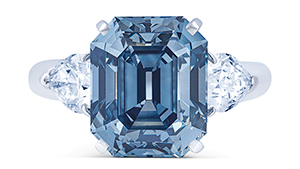Guardians of Trust: GIA’s Innovative Research, Instruments and Services
September 20, 2019
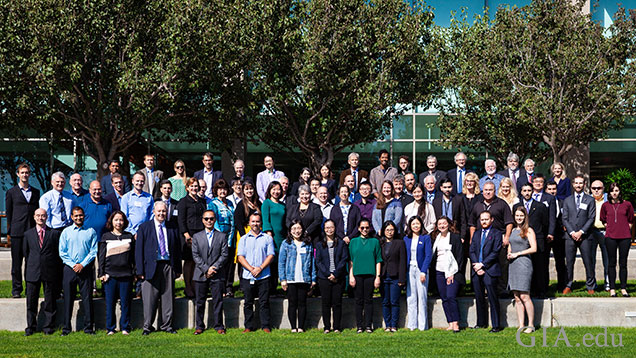
GIA has stood at the vanguard of diamond, colored stone and pearl identification, treatment detection and identification throughout its history. From the iconic jeweler’s loupe to breakthrough 21st-century technologies, the tools and products the Institute develops serve a single purpose: to protect all who buy or sell gemstones.
Consumers deserve – and want – information about their gems so they can make informed purchase decisions and have trust in their gems and jewelry. They want to know where their gemstones come from, and what factors affect their quality and value. They want to know if they are natural or man-made (also called laboratory-grown) or if they’ve been treated to enhance their appearance. They want to be protected.
Throughout its nearly 90-year history, GIA has created services and instruments to uphold its mission of protecting the public’s trust in gems and jewelry. This research-based effort grew in importance and impact as new gem treatments and laboratory-grown gems entered the market.
All of this built on GIA’s legacy of innovation.
Gemological Innovation: Central to GIA’s Mission
Gemology was a relatively new science when Robert Shipley, Sr. founded GIA in 1931. It was new enough that there were few suitable instruments that provided the ability to conduct detailed examinations of gemstones.
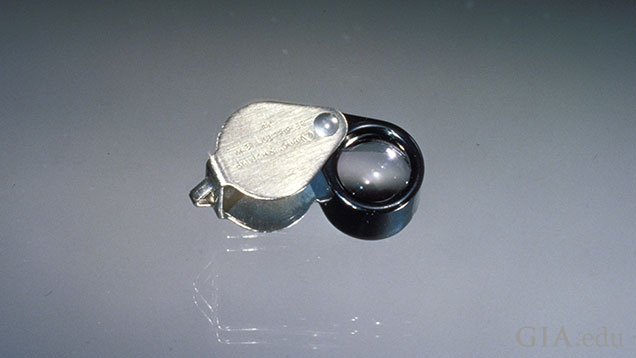
That did not deter Shipley’s son, Robert Jr., from adapting and developing instruments to accomplish that task. Within a few years, he developed several important instruments that are still in use today. In 1934, GIA introduced the iconic 10x loupe that hangs around every gem dealer’s and jeweler’s neck today. Shipley Jr. also developed a gem-testing polariscope to determine whether a stone is singly or doubly refractive, a very important factor in identifying gemstones. His binocular microscope with darkfield illumination remains standard equipment in every gem lab today.
These instruments were, and remain, invaluable for gemological work in differentiating minerals with similar appearances. For example, a “ruby” in the British crown jewels was later found to be a red spinel. Even with these innovations, the need for further gem testing equipment continued.
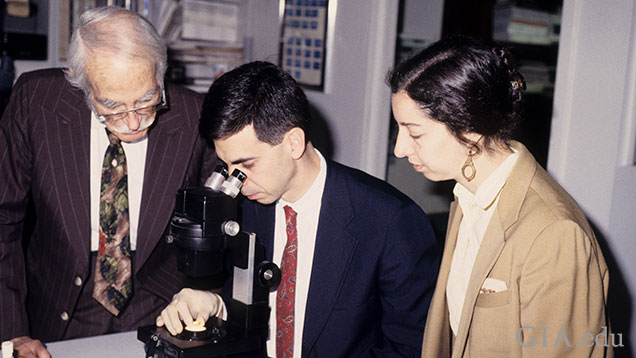
In the early 1940s, Shipley, Sr. and Richard T. Liddicoat, who became GIA’s second president, devised a scientific process to standardize diamond grading that removed much of subjectivity and variations that prevailed in the market at that time. A decade later, Liddicoat and others built on the 4Cs of diamond quality (color, clarity, cut, carat weight) developed by Shipley and codified these standards into the International Diamond Grading System for D-to-Z diamonds, which established a common standard and language to describe diamond color and clarity. This system is the recognized and accepted standard worldwide; it has facilitated diamond trading and helped consumers to better know what they are buying for decades.
The influx of cultured pearls in the mid-1900s created the necessity to accurately differentiate them from natural ones. GIA scientists developed a specialized X-ray unit to provide a definitive answer at a low cost. In the 1950s, diamonds treated with radiation began showing up in the market. Robert Crowningshield, who was vice president of GIA’s New York laboratory and pioneered many gem identification techniques, determined how to recognize most of them using a spectroscope he adapted for gemological use.
A Research Team to Focus on Gem Treatments, Identification
By the mid-1970s, a growing number of gemstone treatments and laboratory-grown gems were entering the market – heat-treated sapphires, laser drilling of diamonds, more varieties of cultured pearls and an influx of laboratory-grown rubies. As consumer demand soared, so did the urgency to identify these stones. This prompted GIA to create a dedicated, full-time research department. This initially small research team was instrumental in developing colored stone, pearl and diamond identification methods and techniques to identify these treatments and sharing them with the industry-at-large through its quarterly professional journal, Gems & Gemology.
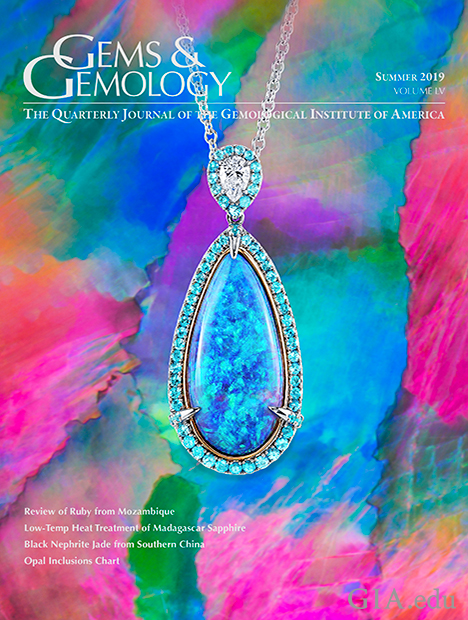
A new treatment emerged in the late 1990s in which diamonds were subjected to high temperature and pressure to improve their color. Within a few months, the GIA research team employed a full array of available and adapted technology, and was able to determine how to identify the treatments and prevent a potential crisis of consumer confidence.
Moving into the digital age, GIA, as part of its diamond-cut research project, developed an accurate system to evaluate diamond cut quality. Based on this extensive diamond research, Facetware estimates the cut grade of round brilliant cut diamonds. The system is underpinned by the fundamental ray tracing work GIA did over decades, modeling the proportions of several million diamonds examined by GIA and using the results to polish additional diamonds to verify the modeled results. The Facetware software was then made available to instrument manufacturers to incorporate into their non-contact measurement devices.
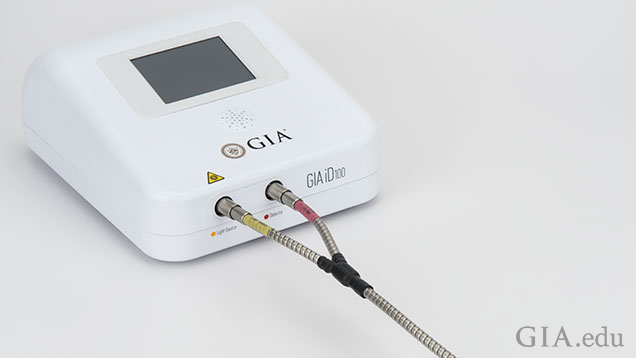
Screening for Laboratory-Grown Diamonds
One of the latest GIA advances is a result of the concern about knowing whether a diamond is natural or laboratory-grown.
Because the majority of melee-size diamonds do not go through gemological laboratories for grading and identification, GIA developed the iD100® device to screen for laboratory-grown diamonds and simulants. The desktop unit is particularly suited for retailers and jewelry manufacturers who need to be sure about the material they are selling or setting in jewelry. Using spectroscopic technology, the device can definitively separate all laboratory-grown diamonds (both HPHT and CVD) and all simulants (cubic zirconia and moissanite) from natural diamonds. The screening takes less than two seconds per stone and can the instrument can screen loose or mounted diamonds as small as 0.9 mm.
Ensuring Transparency, Traceability and Authenticity
More and more consumers want to know where their gems come from, including the country, and be assured of their quality and authenticity.
GIA has offered country of origin reports for some colored gemstones for many years. Scientists are able to make these determinations based on scientific data from samples collected by GIA field gemologists at mining locations throughout the world. These reports are available for ruby, sapphire, emerald, Paraíba tourmaline, red spinel and alexandrite.
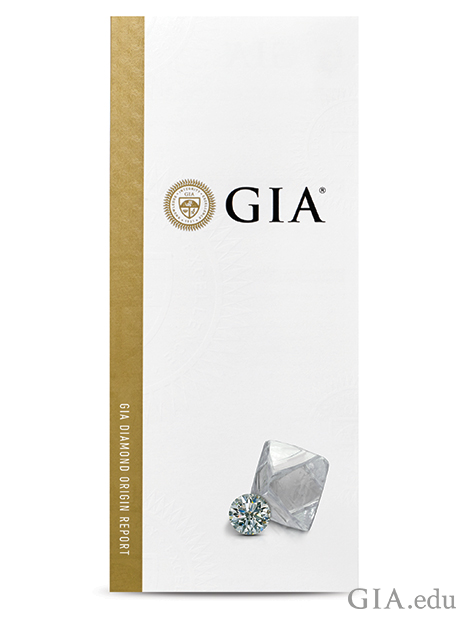
In March 2019, GIA introduced its Diamond Origin Report service, which can confirm the country of origin of polished diamonds. Rough diamonds submitted to GIA before they are faceted and polished are examined to record identifying information. Each rough diamond is assigned a unique identification number. Then, when the resulting polished diamonds are sent to GIA for grading, that same information is used to match the polished gem to its original rough. Through this scientific matching process, GIA can confirm the country of origin information provided by the participating mining company.
The GIA Diamond Origin Report includes the country of origin, a full 4Cs quality analysis of each diamond and a report number inscription. Consumers can access the diamond’s full grading details online through the GIA Origin app and the online GIA Report Check service, and also find video and photos of the rough and polished diamond, its corresponding original rough and detailed background information on the country from which it originated. Click here to see a sample report for a diamond from Canada.
GIA launched digital diamond grading reports secured by emerging blockchain technology with retailer Chow Tai Fook in 2018 to even further enhance the customer's knowledge of where their gem came from.
The GIA diamond grading information is added to Chow Tai Fook’s T-MARK app, enabling customers to confirm that their diamond matches the GIA report. The blockchain-secured reports provide confidence for the consumer and protects the integrity of GIA reports by ensuring transparency, authenticity and verifiability for diamonds throughout their journey from manufacturer to consumer.
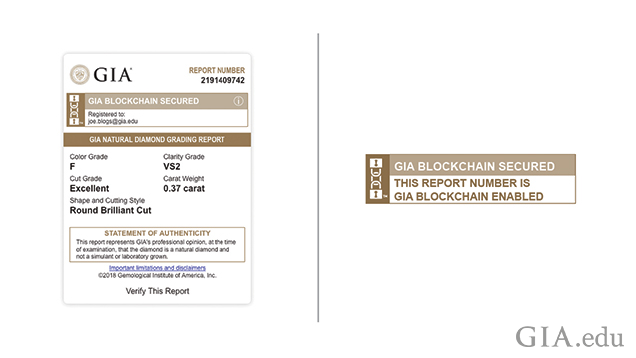
Looking to Future Services
Institute leaders believe blockchain technology could have broader application to how GIA and its clients manage diamond grading and other reports and services in the future.
“We are working with IBM on research on how we might be able to use technology, including artificial intelligence, to scan a diamond and link – via blockchain – to the GIA grading report for that diamond,” says Tom Moses, executive vice president and chief laboratory and research officer for GIA. “Blockchain technology might also be used as part of our diamond origin service, which can match polished diamonds to their original rough to confirm the diamond’s country of origin.
“Both applications demonstrate GIA’s commitment to making sure the diamond’s history is documented and transparent.”
Russell Shor is senior industry analyst at GIA in Carlsbad.


